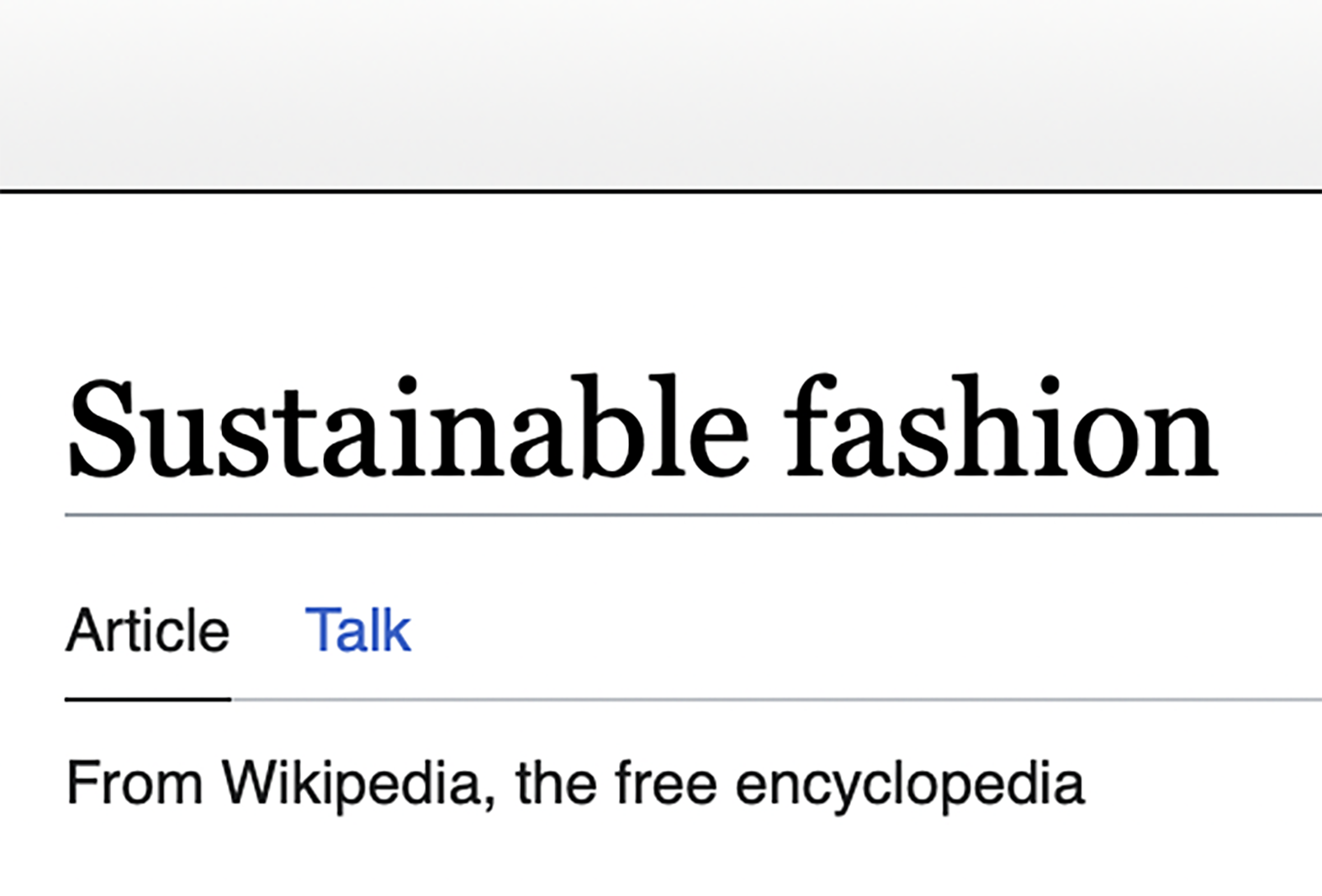Wikipedia edit-a-thon 2023
On 28 February we’ll work together on this year’s challenge: expanding the debates on sustainable fashion
The Wikipedia edit-a-thon has been a recurring event throughout the UCRF calendar since its founding. It is a great opportunity for members to make research on sustainability accessible to the general public and help support a more informed debate. Over the last four years, February 26 has been the date for concerted efforts to edit the "sustainable fashion" page on Wikipedia for more accurate information and references to peer-reviewed sources. Since we set out in 2019, this page has changed drastically for the better (even if there is still much to do).
However, as the “sustainable fashion” page on Wikipedia has now expanded a bit beyond what is easily digestible and is a bit unruly as users keep remaking it, it may be time to create new linked pages with current topics under debate. For example, separate pages on wardrobe studies, circular fashion, sustainability in supply chains, or debates on indexes may be a good way to expand the scope of accessible research with a near-global reach.
As February 26th falls on a Sunday, we suggest Tuesday February 28th as an alternative date for collaborative work. On Tuesday 28th, volunteers from across the Union can collectively activate a series of ‘activist knowledge ecologies’ by creating new pages under the topics they are currently researching and add information and references to these new pages on Wikipedia.
Editing on Wikipedia is not tricky at all. You can just jump in and get started by clicking the “edit” tab on the page you want to edit. Work in small steps, a sentence or reference at the time.
For a more extensive dive, here’s a guide to getting started editing more seriously on Wikipedia:
1. Familiarise yourself with how to edit a Wiki page. I recommend the Art+Feminism Wikipedia editing resources (these pages focus on gender, but the underlying editing issues are all relevant). There are some Wiki principles to familiarise yourself with and some basic editing tools that will help you.
2. Create a Wikipedia account if you want to. It is your choice, but it often helps when getting your edits through the process of the wikipedia editors. There is some guidance available to help you make various decisions by following the links.
3. Open the Sustainable fashion page on Wikipedia and click edit.
4. Choose a section to edit on the Sustainable Fashion Wikipedia page. To prevent ‘conflicts’ because different people are working on the same section, consider working with about one sentence at a time. It isn’t the end of the world if more than one person edits the same section at the same time, but it will require some manual editing afterward, which won’t be much fun…!
5. To create a new page, mark this word in the Wikipedia text while editing, then the "link" icon, and then create a link to this new word (even though the page does not yet exist) - this creates the page. Save. Then click this new link, and - voila - the page is there, and you can start editing!
6. Get going editing. Wikipedia is fairly intuitive, and there are lots of links to help pages. Start with a small edit and build your confidence, or add one reference or link. There are no specific UCRF guidelines about what to edit other than Principle 1 of the Union of Concerned Researchers manifesto: Create an ‘activist knowledge ecology’, that is, to develop a system of knowledge about fashion sustainability that is concerned with how knowledge is organised and shared as well as the data points themselves and to direct such a system purposefully towards fostering change.
Work to your expertise, and cite peer-reviewed sources. Make small edits at a time. Be prepared for some edits to be deleted by moderators.
7. When you click "publish," you will be asked to describe your changes – mention briefly what your edit is about.
8. You can use the ‘Talk’ tab at the top of the Wiki page to discuss issues with the wider Wikipedia community that is interested in editing the Sustainable Fashion page.

